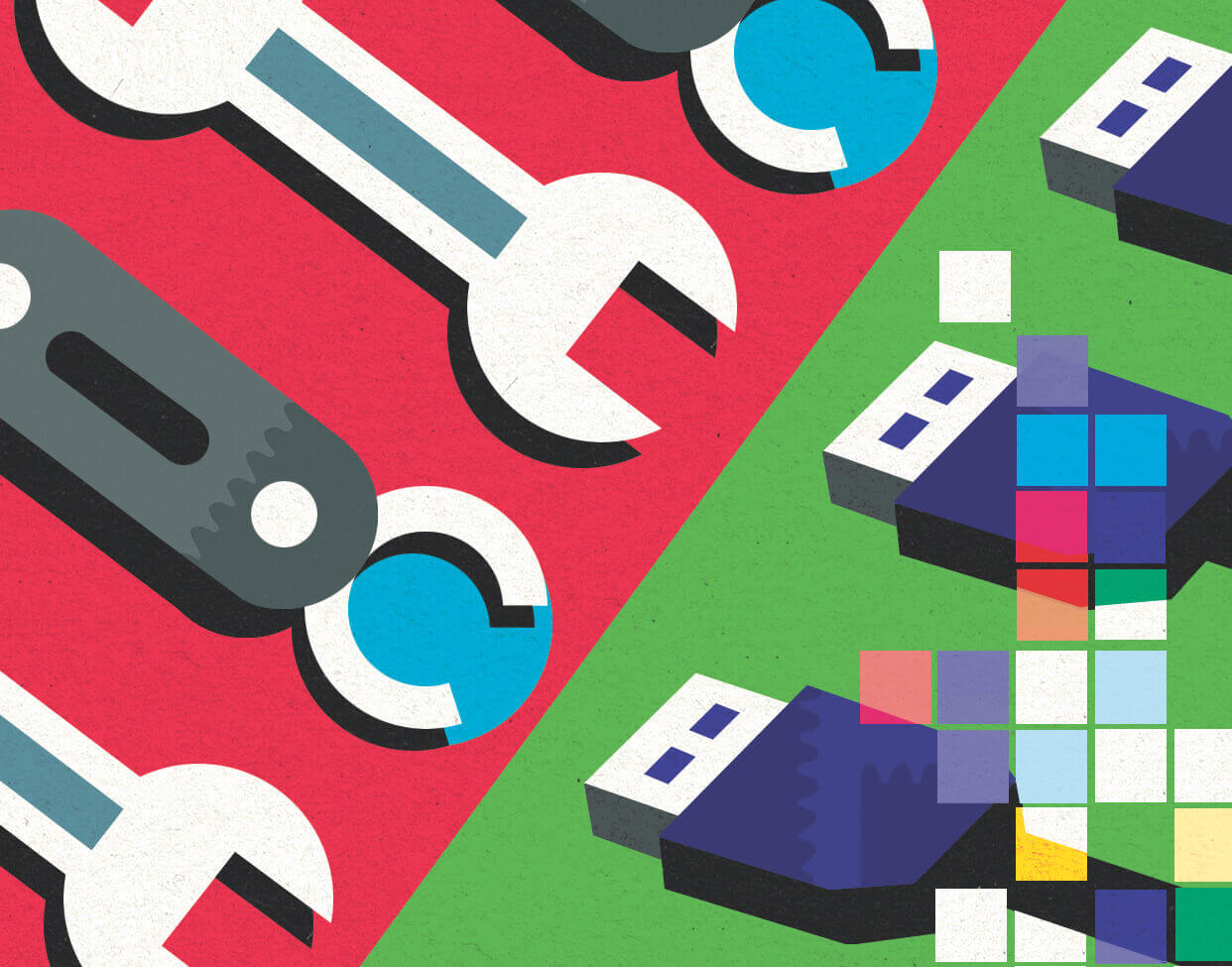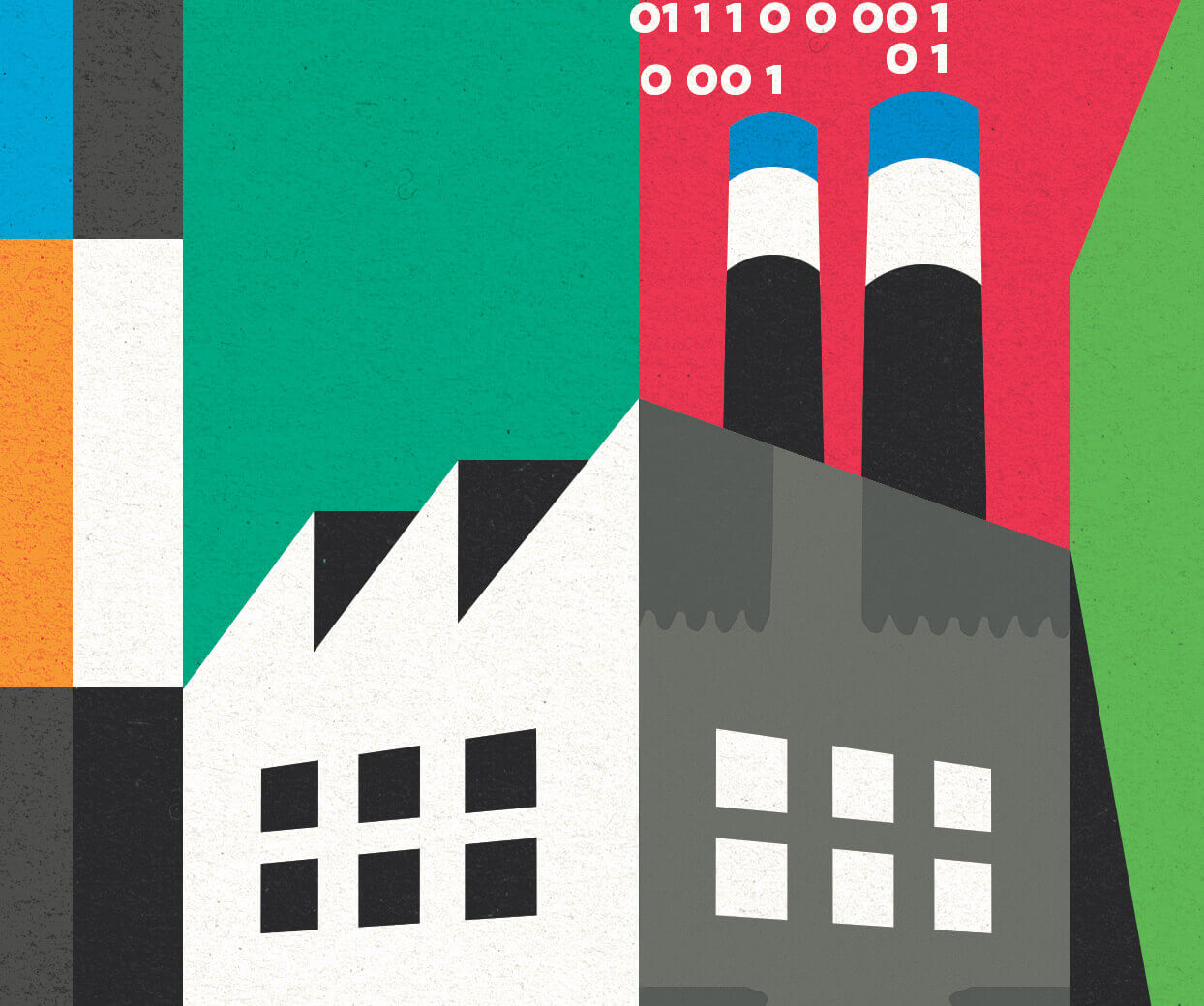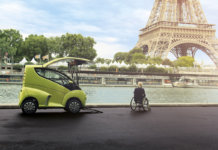“If every tool, when ordered, or even of its own accord, could do the work that befits it… then there would be no need either of apprentices for the master workers or of slaves for the lords.”
-Aristotle
Illustrations by Amanda Willemse
While we tend to think of the growing reach of industrial robotics as a modern phenomenon, the concept of tools and machines that could operate themselves has been a preoccupation from the dawn of civilization. Around the 9th century, collective wisdom was stitched together in a book called The Science of Ingenious Mechanisms, which gave instructions for the era’s most impressive autonomously moving devices.
In the early 20th century, the concept of robots in society found its way into science fiction when Rossum’s Universal Robots premiered in Prague in 1921. The play told the story of sentient robots who rose up together and killed their human masters. This familiar trope reflects the weariness people seem to have about introducing increasingly sophisticated robots into various aspects of our lives.
But is this fear grounded in reality? Does history give cause for a utopian or dystopian outlook on what a robotic boom will mean to our industries and, in turn, our societies?
The Industrial Robotics Breakthrough
George Charles Devol is widely recognized as the father of robotics for having invented the Unimate, the world’s first industrial robot, in 1954. This later led to the formation of his company Unimation.
Unimate was installed in General Motors’s auto manufacturing plant in the early 1960’s, and the robot was designed specifically for die-casting, handling, and spot welding. Seeing the early success, Ford was quick to come on board, and other car manufacturers similarly followed suit. This early industry-wide adoption is why the concept of industrial robotics tends to be associated with car manufacturers.
The robotics boom in the car manufacturing industry marked the first of three distinct phases in industrial robotics, which are:
- 1960-1979 – Basic industrial labour replacement robots
- 1980-1999 – Computerized robotics entering the workplace
- 2000-Present – IT-driven smart robots allowing for mass automation
The Current Landscape and Impact of Robotics
It’s not hard to see the wide-ranging impact robotics and automation has had on our current industrial landscape. In 2013, there were approximately 1.2 million robots in use around the world. That figure jumped to 1.5 million the following year and is currently hovering around the two million mark today. In terms of dollar value, the robotics sector is expected to rise from $15 billion today to $67 billion by 2025.
One of the most compelling reasons for employing robotics comes down to simplifying a company’s workforce. Take the example of Google, a $370 billion giant of a company, which only employees 55,000 people. That figure is less than a tenth of what AT&T had in its prime.
The International Federation of Robotics (IFR) observes: “Robots increase productivity and competitiveness. Used effectively, they enable companies to become or remain competitive. This is particularly important for small-to-medium sized (SME) businesses that are the backbone of both developed and developing country economies. It also enables large companies to increase their competitiveness through faster product development and delivery.”
Robotics and GDP
The impact of robotics is not limited to the efficiency of an individual enterprise. A report by the IFR shows that countries that invest in robotics technology see a corresponding bump in their annual GDP. The report concluded, “that robot densification increased annual growth of GDP and labor productivity between 1993 and 2007 by about 0.37 and 0.36 percentage points respectively across 17 countries studied, representing 10% of total GDP growth in the countries studied over the time period…”
A 2016 report by Accenture in collaboration with Frontier Economics suggests the potential of automation can increase labour productivity by 40% by 2035 in 12 developed economies.
 Is Robotics a Friend or Foe to the Worker?
Is Robotics a Friend or Foe to the Worker?
While very few dispute the economic benefits that robots can have in an economy, there has been an increasing debate over whether their greater presence is good or bad news for the front-line worker. Will robotics take away manufacturing jobs and destroy the economy or will they free up blue collar workers to work in higher end industries in today’s technological age?
[ms-protect-content id=”4069,4129″]
The answer seems to depend of whom you ask. There is no shortage of those claim that the sky is falling. Just ask economist Andrew McAfee, who writes, “We are facing a time when machines will replace people for most of the jobs in the current economy, and I believe it will come not in the crazy distant future.”
In his book, “The Lights in the Tunnel,” Martin Ford argues that “as technology accelerates, machine automation may ultimately penetrate the economy to the extent that wages no longer provide the bulk of consumers with adequate discretionary income and confidence in the future. If this issue is not addressed, the result will be a downward economic spiral.”
Yet, findings in the IFR report provides evidence that the picture may not be as bleak and some believe. It writes, “A review of the economic impact of industrial robots across 17 countries found that robots increased wages whilst having no significant effect on total hours worked (Graetz and Michaels 2015). And although manufacturing jobs have been declining over a number of years Brookings Institution analysts report that countries that invested more in robots lost fewer manufacturing jobs than those that did not (Muro and Andes 2015).”
Economist David Autor highlighted what some may be overlooking when examining the impact of robotics on the job market, by writing, “…automation also complements labor, raises output in ways that lead to a higher demand for labor, and interacts with adjustments in labor supply.”
Future Trends in Industrial Robotics
Today, we are in the midst of a changing landscape where advances in robotics and automation are finding their way in the “softer” service areas, not just in manufacturing. Leaps in artificial intelligence have seen virtual assistants and machine learning deployed in various retail products like the Amazon Echo, while commercial enterprises are employing chatbots to assist and guide people through their online shopping experience. In Japan, there is already a hotel that has introduced a responsive robot that can check people in and escort them to their rooms. It can speak to the guest in either Japanese or English and can even field some basic questions. And this is all just the beginning.
It would appear that the growing trend of robotics in the various business sectors represents a double-edge sword. Yes, there will be some job displacements, but those will be offset by the newer higher-skilled jobs that the new world order requires. Perhaps an observation noted by the McKinsey Global Institute earlier this year sums it up best:
“More occupations will change than will be automated away. This is an important differentiation as it paints a picture, supported by the IFR’s experience, of a future in which robots and humans will work together, each doing what each does best, with positive effects not only for the competitiveness of the firm, with attendant repercussions for employees, but also on the quality of work carried out by people.”
[/ms-protect-content]



 Is Robotics a Friend or Foe to the Worker?
Is Robotics a Friend or Foe to the Worker?










